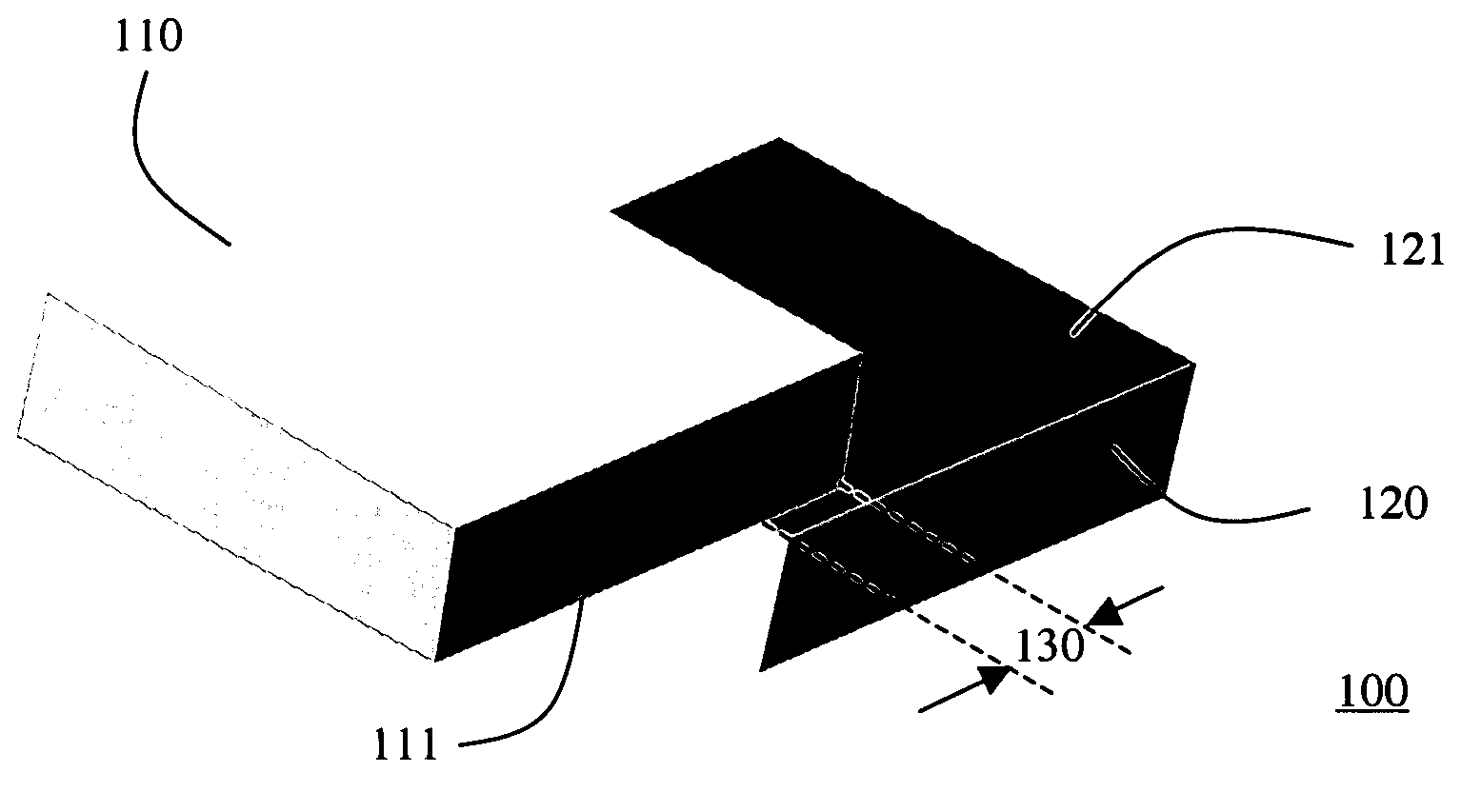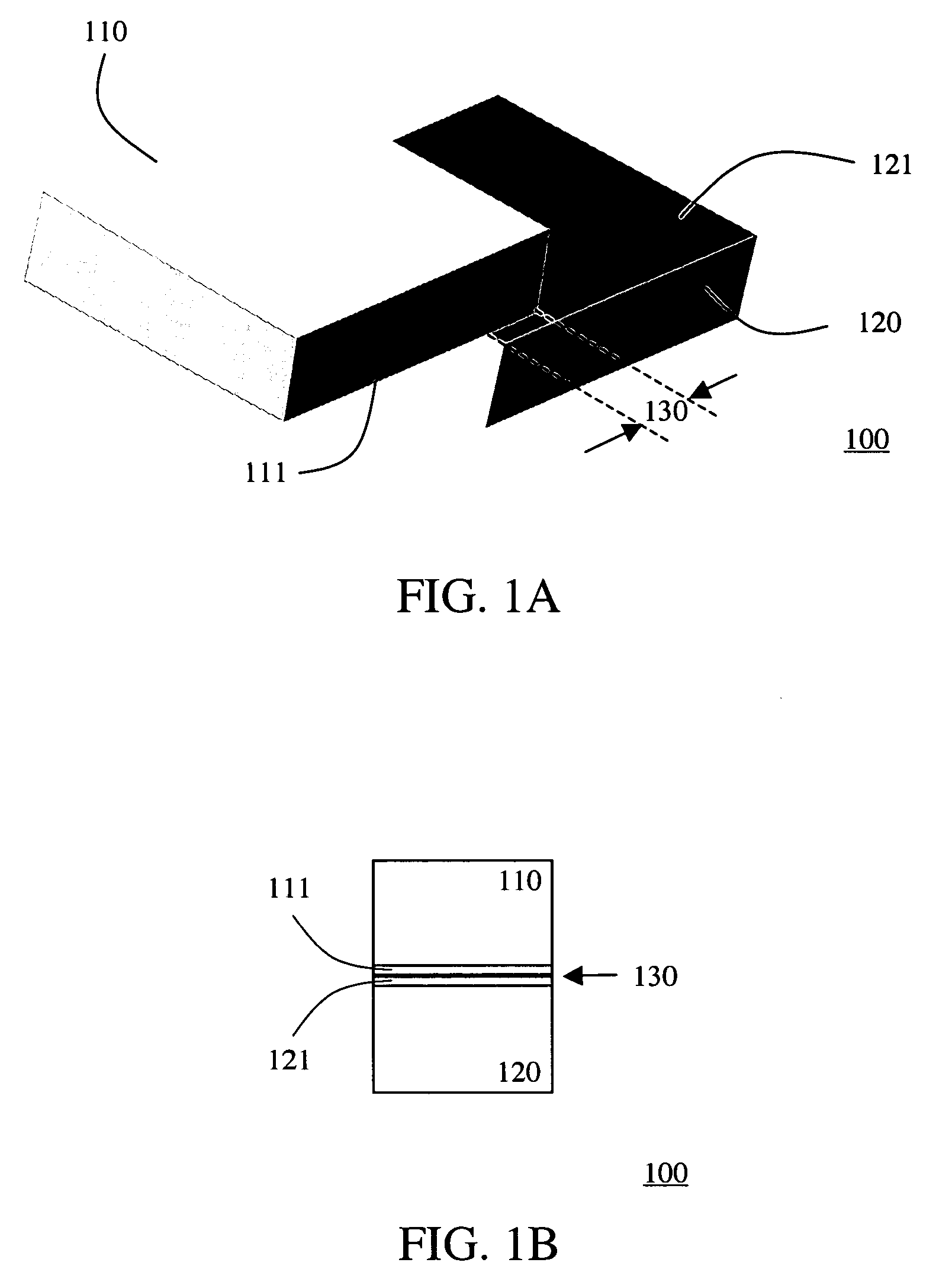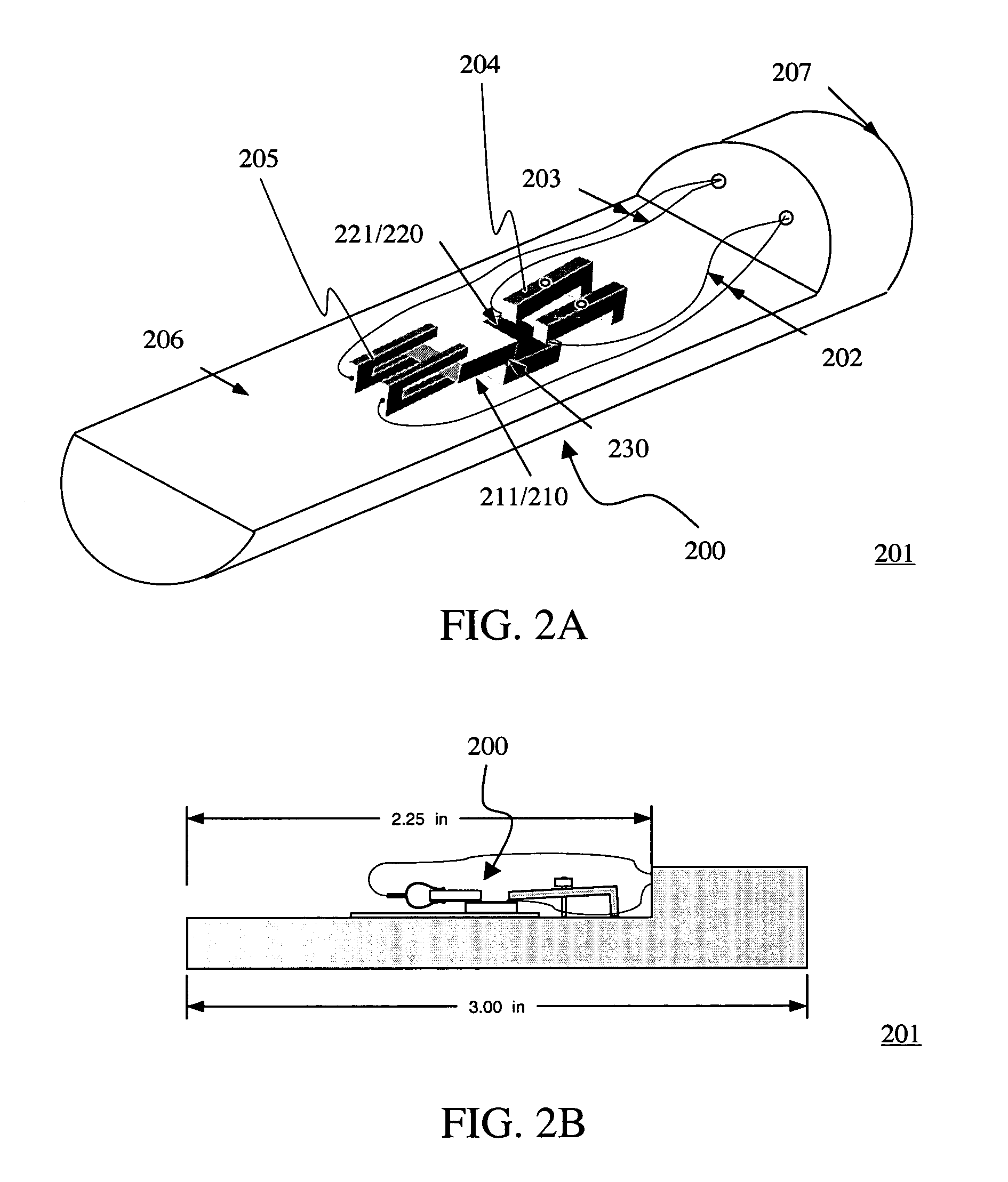Superconductive contacts with hydroxide-catalyzed bonds that retain superconductivity and provide mechanical fastening strength
- Summary
- Abstract
- Description
- Claims
- Application Information
AI Technical Summary
Benefits of technology
Problems solved by technology
Method used
Image
Examples
Embodiment Construction
)
[0029] Bonding techniques disclosed in the above-referenced U.S. Pat. No. 6,284,085, entitled “ULTRA PRECISION AND RELIABLE BONDING METHOD,” and its continuation-in-part, U.S. Pat. No. 6,548,176, entitled “HYDROXIDE-CATALYZED BONDING,” are hereinafter referred to as “HCB,” Hydroxide-Catalyzed Bonding. Similarly, surface modification techniques disclosed therein are hereinafter referred to as “HCSM,” hydroxide-catalyzed surface modification(s).
[0030] The HCB patent successfully demonstrated that the HCB process can bond a broad range of materials, including superconductors such as niobium (Nb) that have a sufficiently high density of surface hydroxyl groups. The HCB patent discloses that the HCB process may be utilized to bond superconductors in a hetero-configuration, i.e., a superconductor-insulator-superconductor layer exhibiting quantum-tunneling effects. The inventors of the present invention have discovered rather surprisingly that, when utilized to directly connectorize, int...
PUM
 Login to View More
Login to View More Abstract
Description
Claims
Application Information
 Login to View More
Login to View More - R&D
- Intellectual Property
- Life Sciences
- Materials
- Tech Scout
- Unparalleled Data Quality
- Higher Quality Content
- 60% Fewer Hallucinations
Browse by: Latest US Patents, China's latest patents, Technical Efficacy Thesaurus, Application Domain, Technology Topic, Popular Technical Reports.
© 2025 PatSnap. All rights reserved.Legal|Privacy policy|Modern Slavery Act Transparency Statement|Sitemap|About US| Contact US: help@patsnap.com



